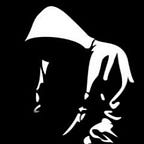Parody
Parody is a literary work that does imitation. It imitates the characteristic style of a work or an author. However, it is a genre in literature. It is also referred as satiric imitation. It is fabricated to present a comic effect. The humorous impact in parody is attained by imitating prominent aspects of a piece of literature. The peculiarities of a person are imitated to get a humorous effect in caricatures. To imitate another person’s accent is also a parody.
What are Parodies?
Parody has been a part of literature, theater, art, film and others for centuries. Parodies are widely visible in many fields. It is done only to make fun of an original work. Some people take parody is a type of ridicule, whereas other people think that it is the noticeable form of flattery. According to research, parody is first, introduced in Greece. It was a form of song or poem in the ancient Greece. Usually, a song or poem imitates the flow of another poem or song. Moreover, ‘Parody’ is a Greek word and here, ‘par’ means beside and ‘ody’ refers to song or ode.
However, parody is not satire and there are differences between parody and satire. Sometimes, parody is used to create satire. It is a direct imitation of a subject to create a comical impact, whereas satire only makes fun of a subject. Moreover, satire criticizes the things in order to make these correct.
Example of Parody in Literature:
‘Sonnet 13’ written by Shakespeare is an example of parody.
“My mistress’ eyes are nothing like the sun;
Coral is far more red than her lips’ red;
If snow be white, why then her breasts are dun;
If hairs be wires, black wires grow on her head.
I have seen roses damasked, red and white,
But no such roses see I in her cheeks;”Miguel de Cervantes’s “Don Quixote” is another example of parody.
However, “Gulliver’s Travel” written by Jonathan Swift is a parody of travel.In the 19th century, parody became noticeable in the United States as the famous writers, including Edgar Allan Poe, John Greenleaf Whittier, Bret Harte and others are imitated by the contemporary writers. However, the art or style of parody has got encouragement in the 20th century. Sir Max Beerbohm’s Christmas Garland was one of the most noticeable and successful parodies of the early 20th century. Sir John Squire wrote a double parody in the period between World Wars I and II.
Movies that showcase Parody:
“Austin Powers” (parody of James Bond movies)
“Police Academy” (spoof on police movies)
“Scary Movie” (spoof on horror movies)
“Young Frankenstein” (spoof on classic monster movies)
“Blazing Saddles” (spoof on American Western movies)
Parody is also used in Music. Weird Al Yankovic is a renowned name in that respect as he made famous music parodies in 1980. Other music parody is “The Chipmunk Song” and it is a parody version of “Christmas Don’t Be Late”.
“Green Chri$tma$” is another parody of “White Christmas” and it is done by Stan Freberg.
The Function of Parody:
Parody is a type of comedy that imitates a piece of work or individual. However, when it joins with satire, it makes the satire more effective. A parody demands the reader’s sense of humor. In parody the author makes fun on the ideals of society and represents the serious state of affairs in a light and entertaining manner. In brief, parody includes spice to the work of literature and makes each writing interesting as well as engaging.
